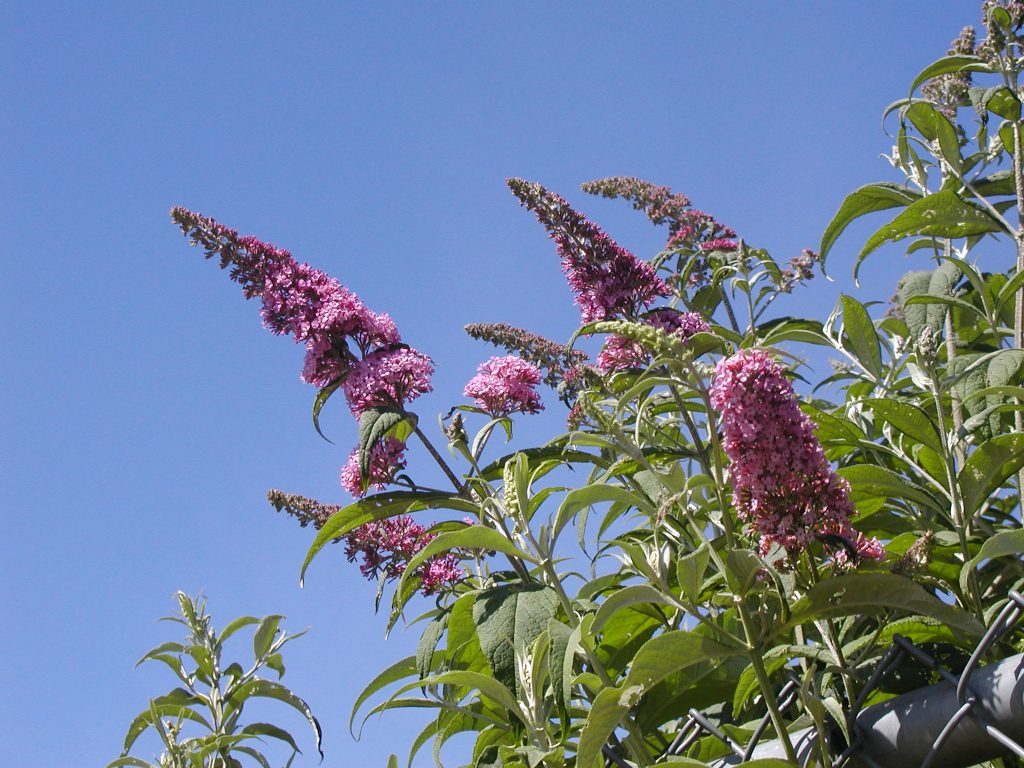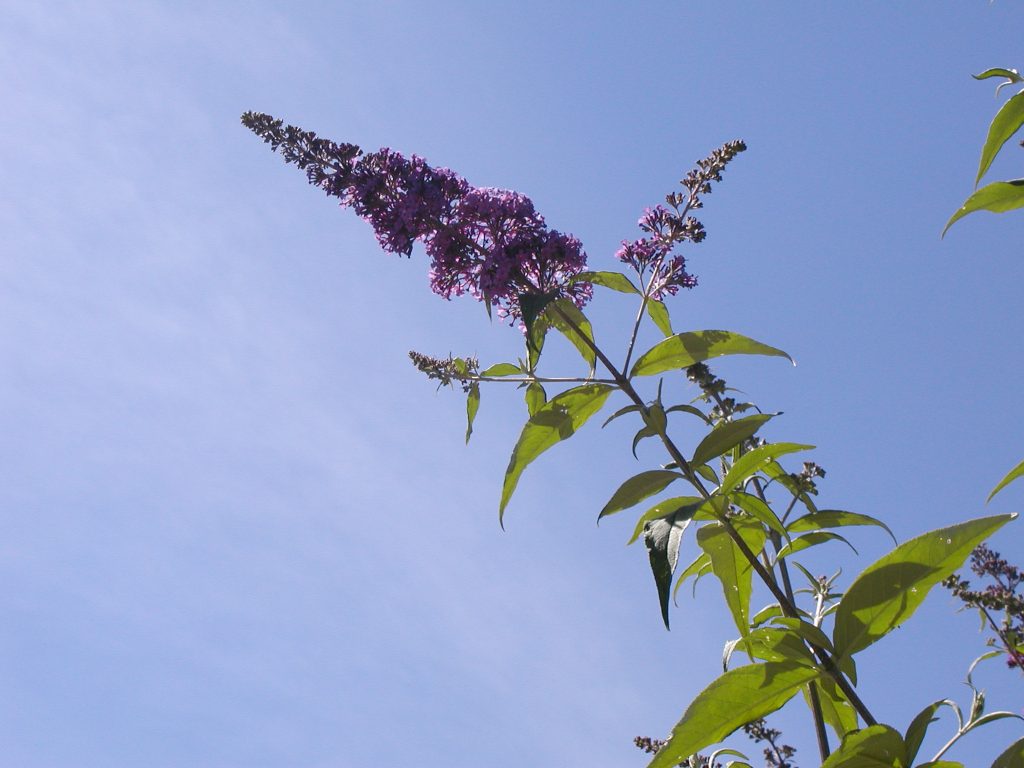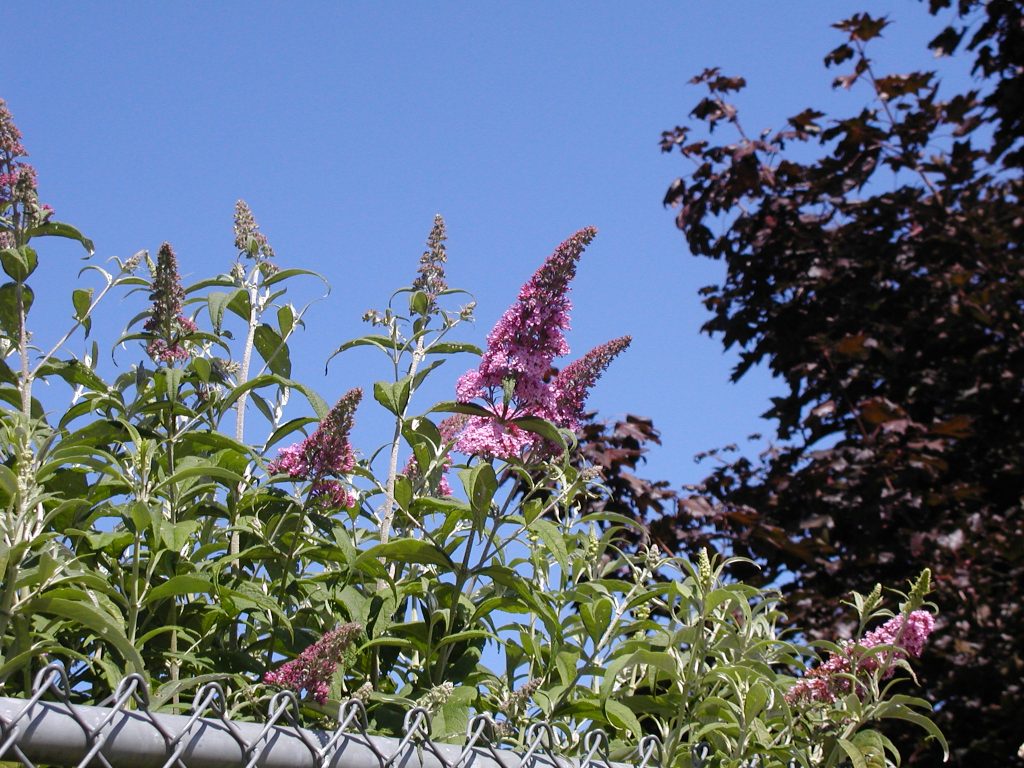Butterfly Bush
Buddleja davidii
Plant Description
A deciduous shrub with showy purple flower spikes, scraggly gray-brown peeling bark, and opposite lance- to egg-shaped green to blue-gray leaves that have fuzzy hairs on the underside. Blooms mid-summer.
See list of ODA-approved seedless cultivars of butterfly bush.
Plant Details
| Life Forms | |
|---|---|
| Habitats | |
| ODA Listing | |
| Soil and Moisture Conditions | |
| Suggested Actions | |
| Shade Preference | |
| Mature Height | 6-12' |
| Distribution | Escaped populations across virtually all of western Oregon and in a couple counties east of the Cascades. |
| Control | Dig up adults and hand pick seedlings. Revisit area regularly to remove seedlings until seed bank is depleted. Refer to the PNW Weed Management Handbook for other options. |
| Disposal Methods | Cut and bag flower heads before they go to seed. Carefully dispose of cut branches, which can sprout roots. |
| Reproduction and Spread | Reproduces by seeds with greater than 80% germination rate and vegetatively: cut stems can sprout roots. |
| Introduced | Butterfly bush is native to China. |
| Look Alikes | Numerous seedless cultivars have been developed. Check ODA's website for a list of approved sterile cultivars. Other look-alikes: lilac, purple loosestrife, and Douglas spirea. |
| Impact | Forms dense thickets along riverbanks, crowds out native plants, may alter soil chemistry. |
| More Info |
|
© Marion Soil and Water Conservation District. All Rights Reserved.



